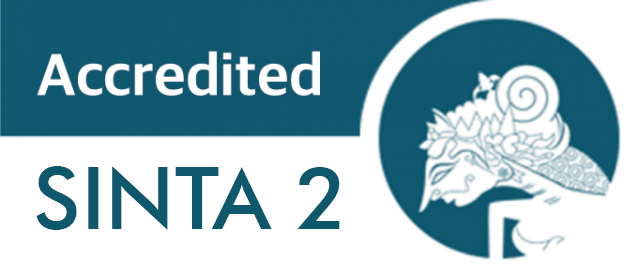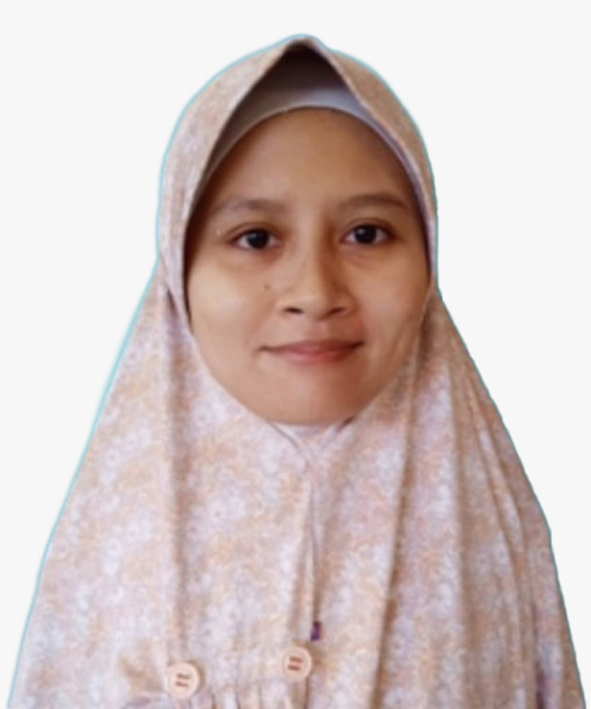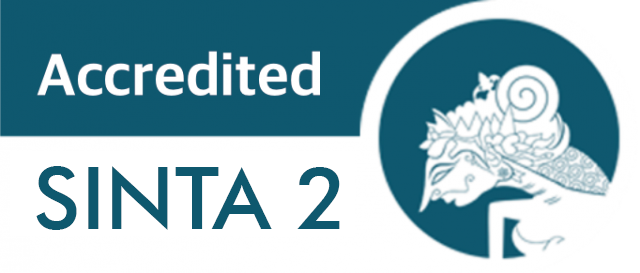Cabin Fever During Isolation Due to Covid-19: What Should We Do to Overcome it?
Downloads
Introduction: Cabin fever is described as some combination of irritability, moodiness, and depression due to isolation during COVID-19. Cabin fever may happen to anyone who has to isolate themself at home because of the COVID-19 outbreak. We aim to identify the risk factor, the influence of hormone imbalance on mood changes, and how to deal with cabin fever during isolation due to COVID-19. People who are unable to connect with other people physically, unable to do activities that they used to do, unmotivated due to having no work, and anxious about finances due to lack of income may have a higher risk of cabin fever. Review: Social isolation experienced by people with cabin fever may result in hormonal imbalances that eventually affect their mood. This is due to the stress that comes from prolonged stay-at-home orders, which are thought to disturb the balance of the hormones in a person’s body. Hormones which are able to cause mood changes are cortisol, thyroid, testosterone, estradiol, and progesterone. Cabin fever is not a recognized psychological condition. In this way, there is no standard treatment for cabin fever. Conclusion: Therefore, acceptance, reconciliation with oneself, coexistence and trust (intimate interactions, mindfulness, and positive self-shaping as self-control) are keys to overcome cabin fever.
Christo M, Saraswati LD, Udiyono A, Sutiningsih D. Mixed Methods Systematic Review : Kejadian Cabin Fever Selama Pembatasan Sosial Saat Penyebaran Penyakit Sars, Mers Dan Covid-19. J Epidemiol Kesehat Komunitas. 2021;6(2):307-316.
Estacio RD, Lumibao DD, Reyes EAS, Avila MO. Gender Difference in Self-reported Symptoms of Cabin Fever among Quezon City University Students during the Covid19 Pandemic. Int J Sci Res Publ. 2020;10(9):848-860. doi:10.29322/ijsrp.10.09.2020.p105102
Yan Z. Unprecedented pandemic, unprecedented shift, and unprecedented opportunity. Hum Behav Emerg Technol. 2020;2(2):110-112. doi:10.1002/hbe2.192
Rosenblatt PC, Anderson RM, Johnson PA. The Meaning of "Cabin Fever.” J Soc Psychol. 1984;123(1):43-53. doi:10.1080/00224545.1984.9924512
Crawford Jamie P, Crawford O. Cabin Fever: Surviving Lockdown in the Coronavirus Pandemic. Warrington: Emerald Publishing Limited; 2021.
Guizzoa AO-, Fogel A, Ho NER. Effects of COVID-19-related stay-at-home order on neuropsychophysiological response to urban spaces: Beneficial role of exposure to nature? J Environ Psychol. 2021;75. https://doi.org/10.1016/j.jenvp.2021.101590
Su H, Wang L, Li Y, Yu H, Zhang J. The correlation between mental health status, sleep quality, and inflammatory markers, virus negative conversion time among patients confirmed with 2019-nCoV during the COVID-19 outbreak in China. Med. 2018;27(June):1-7. doi:10.1097/MD.0000000000026520
John C. Smulian Sonja A. Rasmussen MD MS. Multidisciplinary research priorities for the COVID-19 pandemic. Lancet Psychiatry. 2020;7(7):19-21. doi:10.1192/bjp.2019.191.Andy
Field T, Mines S, Poling S, Diego M, Bendell D, Veazey C. Young, Alone, and Young Alone During a COVID-19 Lockdown. J Ment Heal Clin Psychol. 2020;4(4):31-38. doi:10.29245/2578-2959/2020/4.1219
Knight EL, Christian CB, Morales PJ, Harbaugh WT, Mayr U, Mehta PH. Exogenous testosterone enhances cortisol and affective responses to social-evaluative stress in dominant men. Psychoneuroendocrinology. 2017;85:151-157. doi:10.1016/j.psyneuen.2017.08.014.
J Herman JP, Mcklveen JM, Ghosal S, et al. Regulation of the hypothalamic-pituitary-adrenocortical stress response. 2016;6(2):603-621. doi:10.1002/cphy.c150015.
Adrenal Glands. The Johns Hopkins University, The Johns Hopkins Hospital, and Johns Hopkins Health System.
Richard D, Lopez C. CRH. Handb Biol Act Pept. Published online 2013:1084-1088. https://doi.org/10.1016/B978-0-12-385095-9.00145-7
Tsigos C, Kyrou L, Kassi E, Chrousos GP. Stress: Endocrine Physiology and PathophysiologyNo Title. MDText.com, Inc. Published online 2000.
Loh HH, Lim LL, Yee A, Loh HS. Association between subclinical hypothyroidism and depression: an updated systematic review and meta-analysis. BMC Psychiatry. 2019;19(1):1-10. doi:10.1186/s12888-018-2006-2
Hage MP, Azar ST. The link between thyroid function and depression. J Thyroid Res. 2012;2012. doi:10.1155/2012/590648
Bathla M, Singh M, Relan P. Prevalence of anxiety and depressive symptoms among patients with hypothyroidism. Indian J Endocrinol Metab. 2016;20(4):468-474. doi:10.4103/2230-8210.183476
Sullivan GM, Mann JJ, Oquendo MA, Lo ES, Cooper TB, Gorman JM. Low Cerebrospinal Fluid Transthyretin Levels in Depression: Correlations with Suicidal Ideation and Low Serotonin Function. Biol Psychiatry. 2006;60(5):500-506.
Brian Furman. Testosterone. Elsevier. Published online 2018. https://doi.org/10.1016/B978-0-12-801238-3.98045-0
Shively CA. Sex Hormones, Mood, and Cognition. Encycl Behav Neurosci. 2010;(December):196-200. doi:10.1016/B978-0-08-045396-5.00198-6.
Sergio Della Sala. Encyclopedia of Behavioral Neuroscience. 2nd ed. Elsevier Science; 2021.
Hammes SR, Levin ER. Impact of estrogens in males and androgens in females. J Clin Invest. 2019;129(5):1818-1826. doi:10.1172/JCI125755.
Del Río JP, Alliende MI, Molina N, Serrano FG, Molina S, Vigil P. Steroid Hormones and Their Action in Women's Brains: The Importance of Hormonal Balance. Front Public Heal. 2018;6(May):1-15. doi:10.3389/fpubh.2018.00141
Borrow AP, R.J. Handa. Estrogen Receptors Modulation of Anxiety-Like Behavior. Vitam Horm. 2017;103:27-52. doi:10.1016/bs.vh.2016.08.004.
Tsutsui K, Haraguchi S. Handbook of Hormones. Academic Press; 2015.
Woodyard C. Exploring the therapeutic effects of yoga and its ability to increase quality of life. Int J Yoga. 2011;4(2):49. doi:10.4103/0973-6131.85485
Chen R, Bao Y, Li Z. From being trapped to breaking through: manifestations of cabin fever in young people in response to COVID-19 and suggestions for adaptation. China J Soc Work. 2021;14(2):133-152. doi:10.1080/17525098.2021.1932542
Copyright (c) 2024 Grace Manuela Nurhadi

This work is licensed under a Creative Commons Attribution-ShareAlike 4.0 International License.
1. Copyright of this journal is possession of the Author, by the knowledge of the Editorial Board and Journal Manager, while the moral right of the publication belongs to the author.
2. The journal allows the author(s) to retain publishing rights without restrictions.
3. The articles are published under a Creative Commons Attribution Share-Alike (CC BY-SA) license. Many research funding bodies prefer the CC BY-SA license because it allows for maximum dissemination and re-use of open access materials. Users are free to share (copy, distribute, and transmit) and remix (adapt) the contribution under this license, including for commercial purposes, as long as they attribute the contribution in the manner specified by the author or licensor.




























